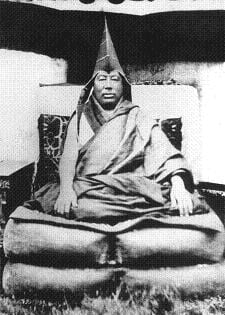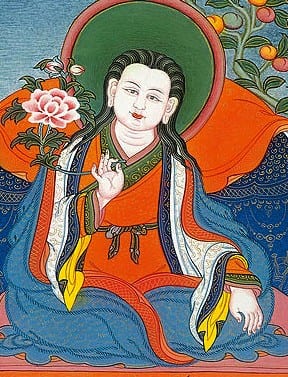Societal Human Values Series #2
Tibetan Emperor Songtsen Gampo, (Srong-brtsan-sgam-po) reigned from 629-650 CE. Among his many achievements, he promoted a moral code, known as the Sixteen Principles of Societal Human Values (michö tsangma chudruk). As the Dalai Lama’s translator, Thupten Jinpa writes, “Most of these sixteen values have to do with promoting greater societal well-being and living one’s life with dignity, honesty and respect for others.”
Phakchok Rinpoche frequently emphasizes the importance of living respectfully in society. He encourages students to memorize and to internalize these points of conduct as a core foundation for our practice of the Dharma. If we don’t hold this moral code well then whatever higher practices we engage in will be unlikely to bear much fruit.
This is the second in a series of explanations of the 16 principles.
Principle #2: Seeking and practising the sacred Dharma (dam pé chö tsel zhing drup pa)
We may have heard that the term Dharma, or “chö” in Tibetan carries at least ten different meanings. The Indian master Vasubandhu explained these as:
- All that can be known
- The path to awakening
- Nirvana
- Mental object
- Merit
- Life
- Teachings of scriptures of the Buddha
- Whatever is susceptible to change–for example material objects
- Rules or religious vows
- Spiritual traditions or systems
All of these uses of the term dharma come from the Sanskrit root dhṛ, meaning “to hold”.
Seeking the Dharma
The 11th century Indian master Padampa Sangye stressed the need for earnest effort in seeking the Dharma. He wrote
Seek the teacher’s instructions like the mother falcon seeking her prey.
Listen to the teachings like a deer listening to music;
Meditate on them like a dumb person savouring food;
Contemplate them like a northern nomad shearing sheep;
Reach their result like the sun coming out from behind the clouds.1The Words of My Perfect Teacher By O-rgyan-ʼjigs-med-chos-kyi-dbaṅ-po (Dpal-sprul), Patrul Rinpoche
Once we understand the suffering of our own condition, we should be diligent and single-pointed in searching for the teachings. These days we are fortunate that so many teachers travel globally and we can meet them in person. Even if we live far from Dharma centers, we can access genuine and authentic Dharma on-line. This is truly wondrous–just think for a moment about our forerunners on the path who had to travel such long distances and go through many hardships to find the Dharma. We have a precious opportunity!
Seeking and Applying
But we have to apply ourselves to this pursuit. A mother falcon is intent on providing for her young and will stop at nothing to get them food. In the same way, we should focus our attention on hearing, reading, contemplating and meditating on the teachings. And we have to continually seek out teachings, and clarify and refine our understanding. When we receive instruction, that is the very moment to put it into practice.
Often we may be very enthusiastic when we first go to a Dharma talk, but then we get distracted by worldly pursuits and don’t remember the instructions. Or if we remember the teaching, we may still think we have no time to sit and practice. We console ourselves by saying, “Next summer I will do some retreat–and then I can really meditate.” But usually then we continue to procrastinate. Or we go to a different teaching and receive other instructions and then we get confused. What are we supposed to practice? And then we become frustrated or lose confidence. Instead, as soon as you hear a teaching–then–immediately–begin to apply the instructions.
Sacred Dharma as Cure or Transformation
In the second human value, the king refers to the “sacred Dharma.” The illustrious master Khenpo Ngawang Palzang, (Khepo Ngakchung) in his A Guide to the Words of My Perfect Teacher, explains the sacred Dharma by saying “just as medicine cures an illness, the Dharma transforms the mind, turning it away from the wrong path of nonvirtue. In this sense, “Dharma,” “cure,” and “transformation” mean the same thing.”

Tibetan teachers often describe the Dharma as medicine, while the Buddha and the lama who explains it are skilled doctors. And the sangha who helps the patient to improve with tender care are like wise and gentle nurses. Yet once again, we must remember that we, as the patient, need to take our medicine in order to attain results. We can’t just hear the Dharma and then expect things to change immediately. And we need to remember what we heard correctly. Take some time to think about how you approach your study of the Dharma. Are you remembering with the fourfold perception?
Qualities of the Sacred Dharma
When we seek a cure or transformation we want to understand the qualities of that pathway. To review these qualities we can turn to the Noble Sūtra of Recalling the Three Jewels (ārya ratnatrayānusmṛti sūtra). Here we read,
The sacred Dharma is good at the beginning, good in the middle and good at the end. It is excellent in meaning, excellent in words and syllables. It is distinctive. It is totally complete. It is utterly pure. It completely purifies. The Buddha teaches the Dharma perfectly. It brings unerring vision. It is without affliction. It is constant and always timely. It is trustworthy when applied. Seeing it fulfills one’s purpose. The wise can validate it through their own awareness. The Dharma taught by the Buddha relies entirely on training the mind. It is truly delivering. It causes one to arrive at perfect enlightenment. It is without contradiction. It is all-embracing. It is constant. It is the cessation of all uncertainty.
Validating the Dharma
When we contemplate these verses we notice that we are encouraged to “validate the Dharma” by testing it for ourselves. But how do we go about doing that? First, we need to receive authentic teachings from a trustworthy source. And then we spend some time reflecting carefully.
Ask yourself these questions and really investigate if the teachings or instructions make sense:
- Can you see where you have been ignorant or deliberately avoiding facing the nature of reality?
- Is it true that everything (including yourself) is impermanent?
- Do external factors bring lasting happiness?
- Are other people in exactly the same situation? And what about animals, or other beings?
- Does everything arise from causes and conditions? What does that mean about the nature of things?
- Is it true that everyone has the same perception of external objects? Do we all like or dislike the same things? If not, what does that indicate?
- Are you the same or different from your body? Your thoughts? Your feelings?

Checking Ourselves
Atiśa’s main student, Dromtönpa Gyalwé Jungné (Geshe Tönpa) distinguishes Dharma from its opposite in some pithy statements,
If it counteracts negative emotions it is Dharma.
If it doesn’t it is non-Dharma.
If it doesn’t fit with worldly ways it is Dharma.
If it fits, it is non-Dharma.
If it fits with the scriptures and your instructions,
it is Dharma.
If it doesn’t fit, it is non-Dharma.
If it leaves a positive imprint, it is Dharma.
If it leaves a negative imprint,
it is non-Dharma.2The Words of My Perfect Teacher By O-rgyan-ʼjigs-med-chos-kyi-dbaṅ-po (Dpal-sprul), Patrul Rinpoche
These statements cut to the heart of the matter and ask us to use our discernment to choose the right course of action. As guidelines, these are easy to follow and we can evaluate our own thoughts and deeds.










Responses